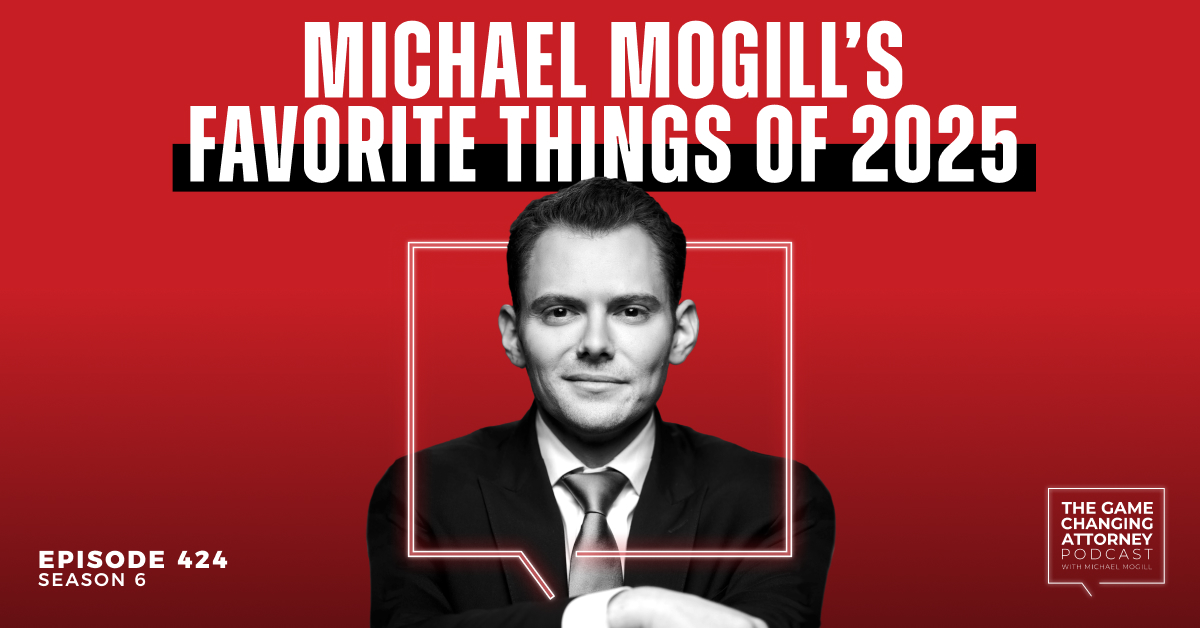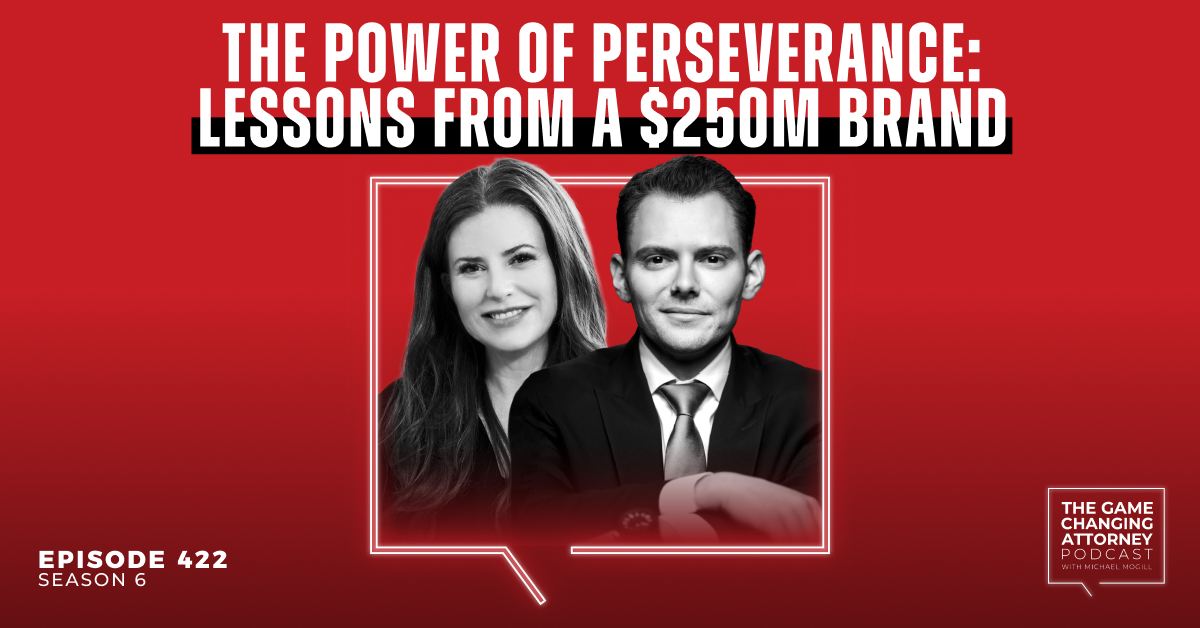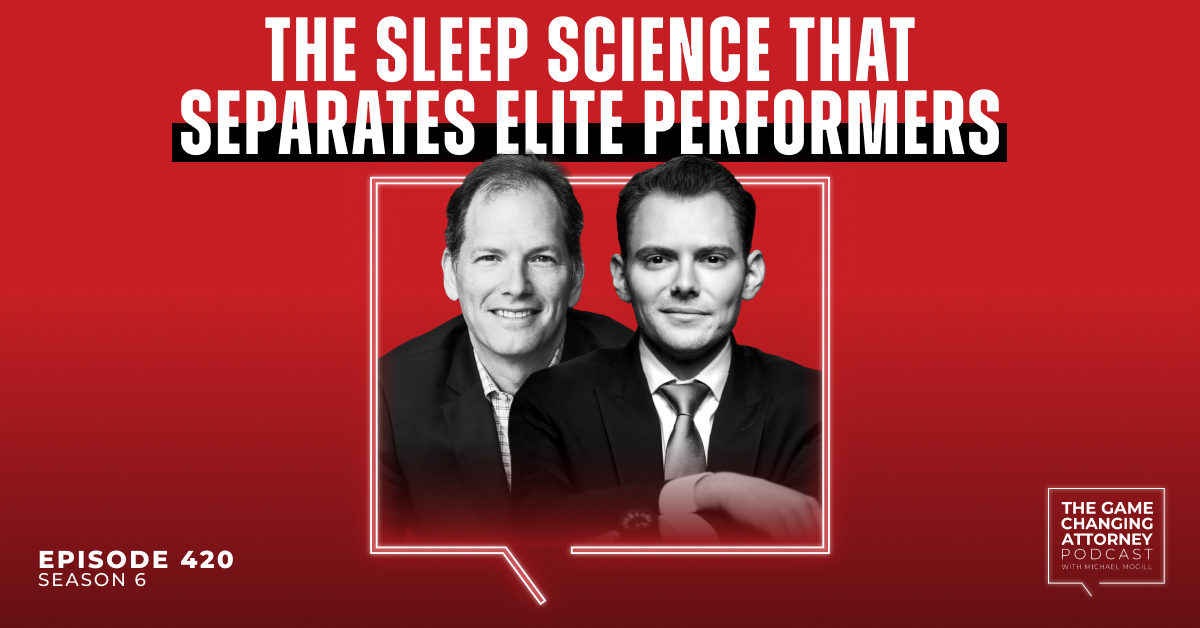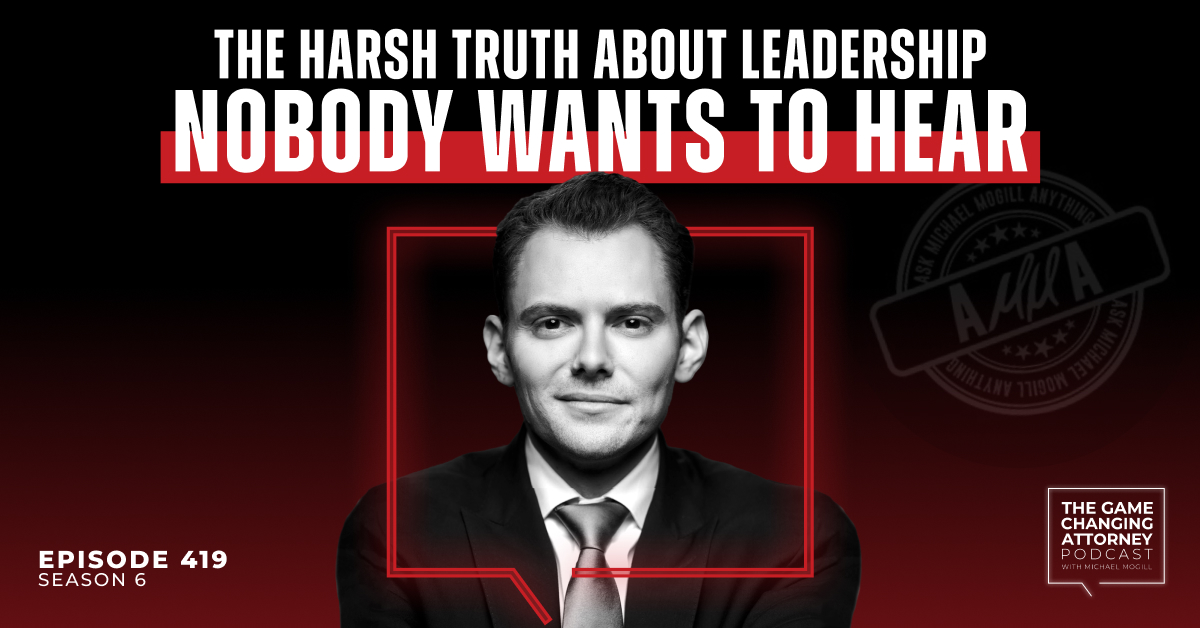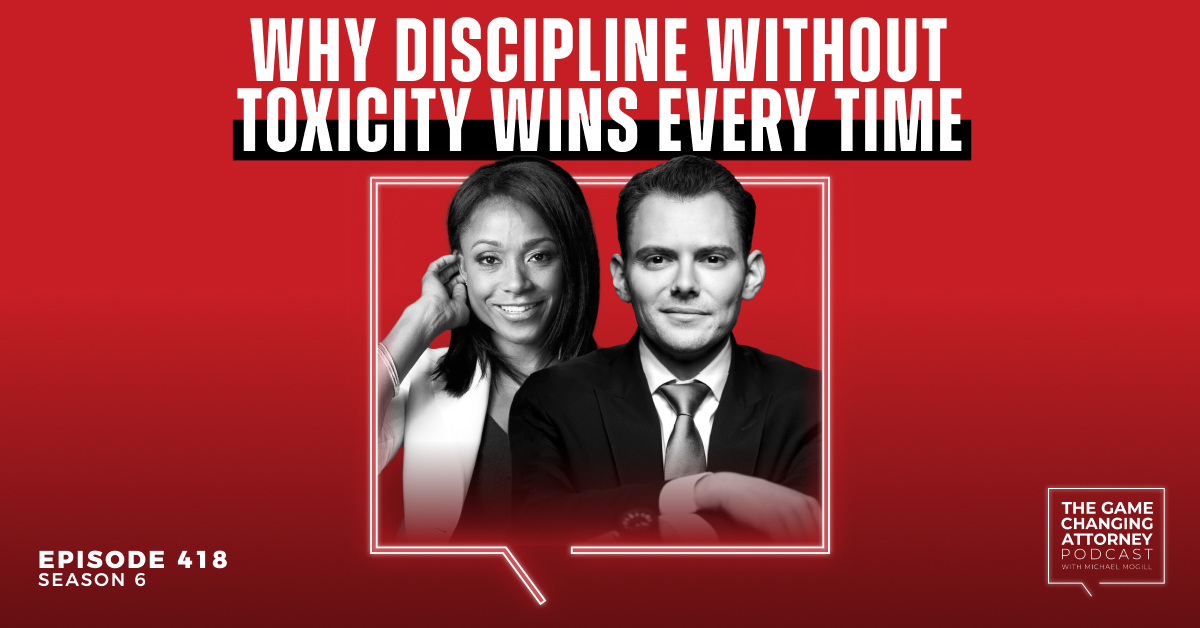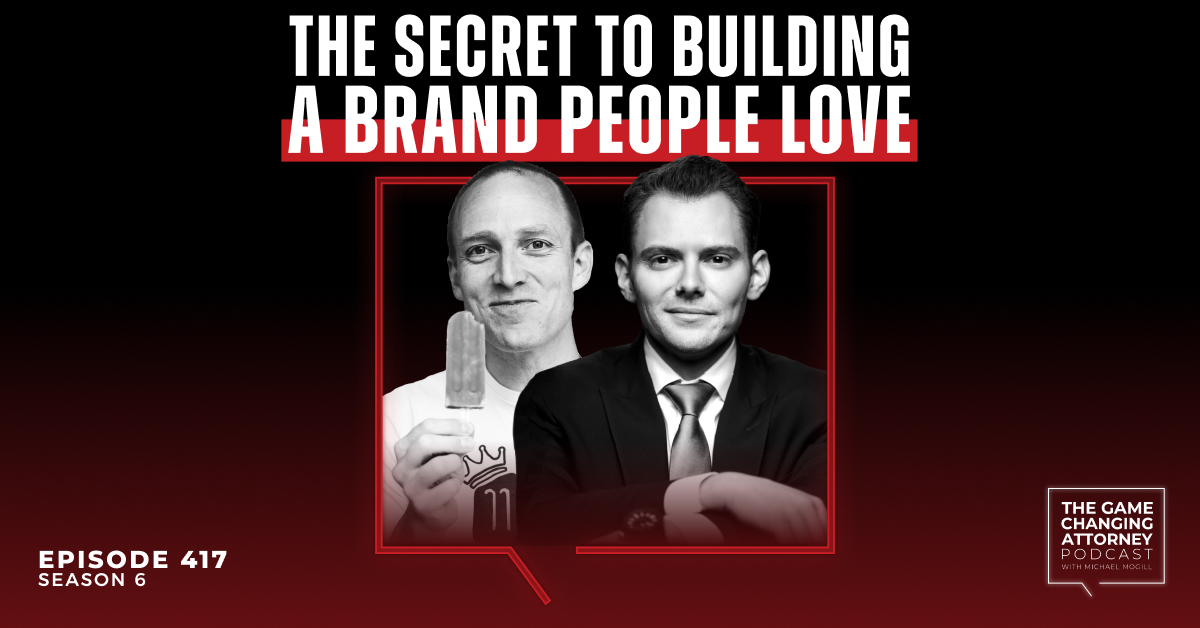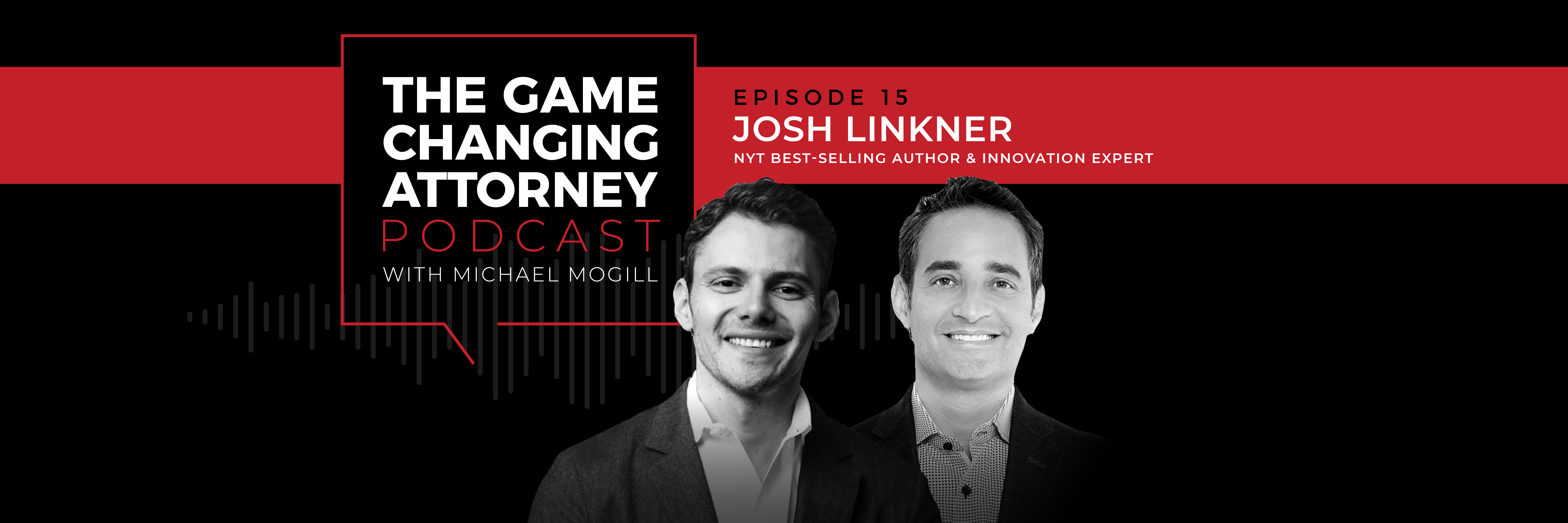

EPISODE 15 — Josh Linkner — Turning Challenges Into Opportunities for Innovation
The world’s foremost innovation expert Josh Linkner is here to unlock the vault to entrepreneurial creativity, show how innovation is NOT only for tech startups, and teach every law firm owner how to tap into their innate ability to solve problems in new ways.
Josh is a 5-time tech entrepreneur, a New York Times best-selling author, and one of the most booked innovation speakers on the planet.
On this episode of The Game Changing Attorney Podcast, he answers the questions:
- How can you prevent life from getting in the way of your creativity?
- Do you have to change the world to be called an innovator?
- Is there really a systematic approach to creativity?
- How can attorneys create something new when everything’s already been invented?
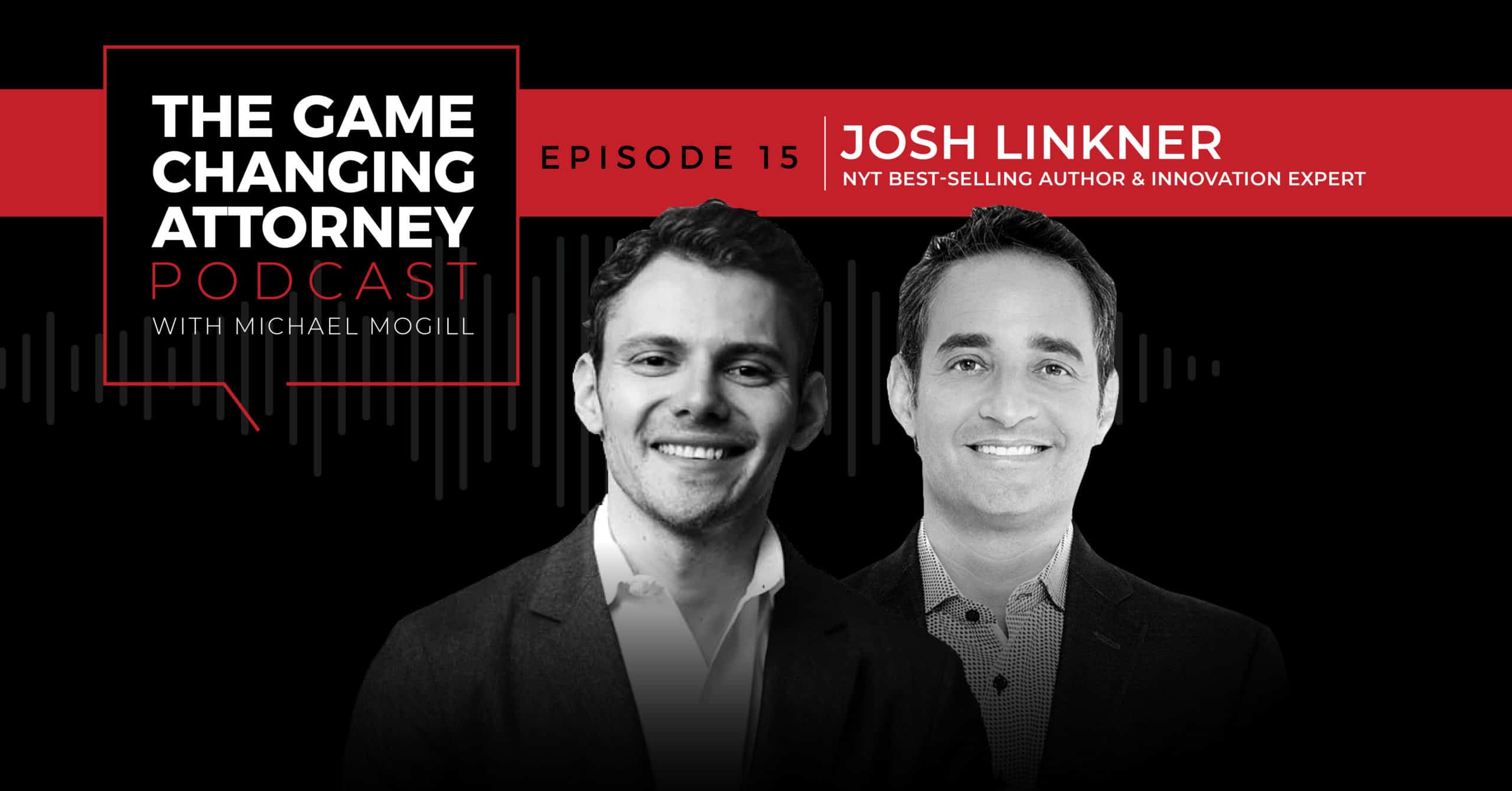
Listen & Subscribe
Show Notes:
1:58 – A history of going against the status quo. “I’ve always taken the path less traveled. And I know it’s sort of a cliche, and I don’t say that like I was really confident. Half the time I was feeling insecure, but when I was in a room and there were 20 other kids — like there were 19 of them and one of me — I always kind of felt like a misfit or an outsider. Again, not a boastful way at all; it was quite the opposite. And that led me to make decisions that were generally the opposite of what most people thought.”
4:29 – It’s never too late to start. “Many of the greatest entrepreneurs started later in life. There are so many myths about entrepreneurs, one of which is that they love irresponsible risk. In fact, the best entrepreneurs figure out how to mitigate risk. They do what appears to be risky in a non-risky way. There are so many misconceptions about this, but I just want to encourage people that if you weren’t the oddball in school or if you didn’t play the violin or dig interpretive dance, it doesn’t mean that you can’t be creative. You can be creative wildly in your firm and in your lives.”
5:22 – Business is like jazz. “I started playing when I was eight, and I put myself through college playing music. When I was 13, I would sneak into jazz clubs in the city of Detroit. I had about a 50/50 ratio of them letting me sit in, or I’d get thrown out in the alley. But I just loved the form — and what happened was, that honestly became the best teacher for me in business. I’d actually never taken a business class when I started my first company at age 20, but in jazz we’re thrown in these situations where you have to adapt in real time. You screw something up terribly and you have to course correct, and you have to pass the baton of leadership from one position to the next. And so those skills, actually, that was the greatest teacher of all in business. I learned way more doing jazz than I did ever taking a business class.”
6:19 – His very first company. “At 20 years old, I saw an opportunity to start a tech company. I’ve always been sort of a tech nerd in addition to a jazz musician. And at the time — this was 1990, so you couldn’t just go buy a cheap computer at Best Buy — I saw that PCs were becoming in high demand and that I could mail-order individual components from catalogs, assemble them in my college apartment, and sell them on campus for a profit. So I started doing that a little bit out of my college apartment, ended up taking a year out of college and building this little retail business, and then sold it.”
8:49 – Creativity is king. “The one thing that allowed us to win at the highest levels was our ability to be creative. That became like our superpower, and as I became so excited about that with jazz and then business, I realized that this wasn’t germane to me. In fact, the research is so clear that all of us have enormous creative capacity, and I just started realizing that as human beings we have this massive dormant resource in most of us that can be tapped into, and when we do it just becomes so wildly important and powerful. That sort of sent me off on this crazy mission to say, ‘Can I help elevate people’s creativity even 5% — because a 5% boost in creative output could be a 500% increase in their earnings and their lives for their families?’ And so, I just went out in this crazy wild mission to help make the world a more creative place.”
10:34 – Creativity can be taught. “There absolutely is a systematic approach to cultivate, harness, and build your creativity muscle — and then ultimately deploy it so you can drive great stuff in your business and your life.”
11:02 – Anyone can innovate. “There’s another misconception that innovation only counts if you change the world. Like, it only is innovation if you cure cancer or if you invent the next thing that becomes a billion dollar tech idea. And in that context — and again, that’s how most people think — innovation only applies to people wearing a lab coat or a hoodie. The truth is that we can apply innovation everywhere.”
13:19 – Exercise your creative muscles. “Look for ways, even five minutes a day, to add a little creativity. That can be something as simple as ordering your pizza with the pepperoni under the cheese instead of on top, or wearing your watch on the other hand, or taking a different route to work. But small little acts of injecting non-traditional approaches start to build the muscle — and then eventually big things emerge.”
17:13 – A different kind of leadership. “Leadership and people is what matters, but maybe not in the way you think. Most people think of entrepreneurs as larger-than-life charismatic people that fill up a room, and it’s all raw vision and passion. Nothing wrong with that, but I found the opposite more true. The entrepreneurs that win are the less boisterous ones, and they’re the ones that are maybe a little bit more quiet and shy. They’re willing to listen, and they’re open-minded, and they realize that it’s not all about them. It’s about the company’s success, and they’re willing to course correct and focus on details and execution rather than just hyperbole.”
19:31 – You must be able to pivot. “[Adaptability] is one of the most important skillsets and mindsets that one can have. I’ve never seen someone just come up with some idea and then it’s just perfect thereafter. That’s just Fantasyland. I mean, the truth is that starting anything of value — whether it’s a law firm or trying a case, or whether it’s building a tech startup — these are things that are hard, and they require that willingness to change and tweak as you go. Real-time flexibility and innovation. Those little big breakthroughs are what add up to greatness.”
21:53 – The old way won’t cut it. “Today more than ever, this is mission critical because today we live in a world of unprecedented change at a rate of change like none other in history. So the notion that we can simply rely on what worked yesterday is a trap that none of us can afford to fall into.”
24:20 – A new approach to brainstorming. “What you have to do is use a more productive approach. ‘Rolestorming’ is brainstorming but in character. You’re brainstorming as if you’re somebody else. So, if I’m trying to figure out how to keep the lights on in my law firm, instead of thinking of yourself who’s got to deal with the law firm, maybe you play the role of Elon Musk. No one’s going to laugh at Elon for coming up with the big idea. They might laugh at Elon Musk for coming up with a small one. So now you — aka Elon Musk — you’re totally liberated. You can say anything you want with no fear.”
26:16 – Change your scenery. “When you think about the great works of art — artists, playwrights, musicians — they went to inspiring places to do inspired work, which makes you wonder why does most of corporate America and why do most law firms look like a sensory deprivation chamber? Terrible lighting, uncomfortable seating, and just awful. It sucks your soul out. So my suggestion would be if you can’t redecorate, go someplace else to be creative. Take your team on a field trip to an art museum or go out in nature.”
27:21 – Pain points = opportunities. “Anytime you can look for pain points, that’s an area for opportunity. When you wake up in the middle of the night and you stub your toe on the bed, and you scream at the top of your lungs some great profanity — let’s just call it ‘dagnabbit,’ even though you say something better — those ‘dagnabbit moments’ are a heat map for innovation. So if you put yourself in your clients’ shoes for a second and say, ‘What are the pain points? Is it finding the right attorney? Is it managing stress throughout the litigation process? Is it the interactions that we have and that they have to drive to my office and find a parking space?’ Anytime you can find a pain point that a customer is experiencing, that’s a wonderful place to sort of direct the sights of your innovation gun and shoot aggressively.”
27:13 – Send your fear to lunch. “The best of the best don’t remove fear. They proceed not in the absence of fear, but by embracing fear. I’ve studied amazing creative talents, but when you look at Steven Spielberg or Lady Gaga, they don’t go on stage with no fear. He doesn’t write up the next screenplay with no fear. It’s the opposite — they learn to compartmentalize the fear. So the best way to actually do it is using tactics to kind of send the fear out to lunch so you can get down to the work of creativity.”
30:21 – Where there’s a will, there’s a way. “So there’s a saying that I always write about called ‘every barrier can be penetrated.’ It’s the notion that no matter how difficult an obstacle may seem or how insurmountable a challenge may feel, that if you throw enough imagination at it, the starting point is that there’s got to be a way to figure it out. That’s one thing that the boldest innovators have in common — that when they see a challenge, they don’t throw up their arms and defeat. They get on to figuring it out and finding a way. Once you have the mindset, then how do you get there? You get there through experimentation.”
31:05 – You must do the reps. “When you see a great singer, you think that he or she was naturally talented, but do you know how much time that person spent singing and practicing scales? So the myth of creativity is that it’s just this instantaneous God-given gift from the heavens, but the truth is that great creators do the reps. I’m no more creative than the next guy. I probably just did more reps than he did. In the same way that a weightlifter in the gym has to do the reps to build his or her biceps, the same thing goes if you want to be creative.”
36:17 – Roll with the punches. “So they’re constantly experimenting, they’re constantly failing along the way, and they’re constantly moving forward without a detailed map. And that’s actually a really interesting way to think about growing our law firms — or even our families in our communities — not having to have everything in a 70-page binder with tabs and numbers, getting started, and figuring it out as you go.”
36:57 – The Borrowed Idea. “That’s actually one of my favorite techniques, and it’s been a successful technique for decades. I call it The Borrowed Idea. Very often we have tunnel vision and insular in our own field. So if you run a personal injury law firm, you probably study other personal injury law firms. But why not look outside of our field? The real core question we have to ask ourselves is ‘where else?’ Where else is the opportunity that you’re trying to grab, or the challenge you’re trying to fix, happening outside of our field? Is a similar thing happening in healthcare, or in sports, or in the arts? And maybe you can say, ‘Is there something that I could borrow from another part of life and apply right here to my law firm?’”
39:30 – Taking the time to recharge. “I try every day to sort of recharge my creativity. And so, think about you drinking coffee. You wake up in the morning, have a cup of coffee, and that kind of recharges your mind, your brain, and your physical body. But what recharges your creativity? A cup of coffee doesn’t take all day. It’s just a little thing, but what’s the equivalent of a cup of coffee for you, for your creativity? Mine is listening to jazz music, or maybe I’ll watch a TED talk that’s inspiring. You know, there’s so much negativity that’s holding our creativity back — this gravitational force. I try to have an equivalent every day to recharge my creative batteries.”
40:17 – Creating good habits. “I have an accountability buddy, a ‘habit buddy.’ Every week we take a screen grab of our different habits tracked and have to send it to each other to hold each other accountable. So I started reverse engineering what I want to happen this year and broke it down into eight categories of habits that I track daily. And then I have to share my habit tracker with somebody who’s going to hold me to the fire and keep me honest.”
41:43 – What does being a game changer mean to you? “I think being a game changer to me means the courage to try something new. Not in the absence of fear, as mentioned, but in the presence of it. Being a game changer is holding yourself to a standard that isn’t the person sitting next to you, but it’s the standard of your own potential. It’s somebody who’s willing to, you know, kind of think about how I want to be remembered, not how I want to get through the day. And so it’s challenging yourself to make the biggest possible impact in the world — challenging yourself to be the best version of yourself, giving yourself permission sometimes to screw something up and dust off and get back after it. And also, being a game changer, I think, is what we’ve talked about — it’s reinventing yourself early and often.”
EPISODE RESOURCES
Shark Tank
ePrize (now known as Merkle)
General Magic movie
Jerry Seinfeld
Elon Musk
Leonardo da Vinci
Yoda
Lady Gaga
Steven Spielberg
Dylan Frittelli
Takeru Kobayashi
Hacking Innovation by Josh Linkner
The Rolling Stones
Connect with Michael
- Text directly at 404-531-7691
